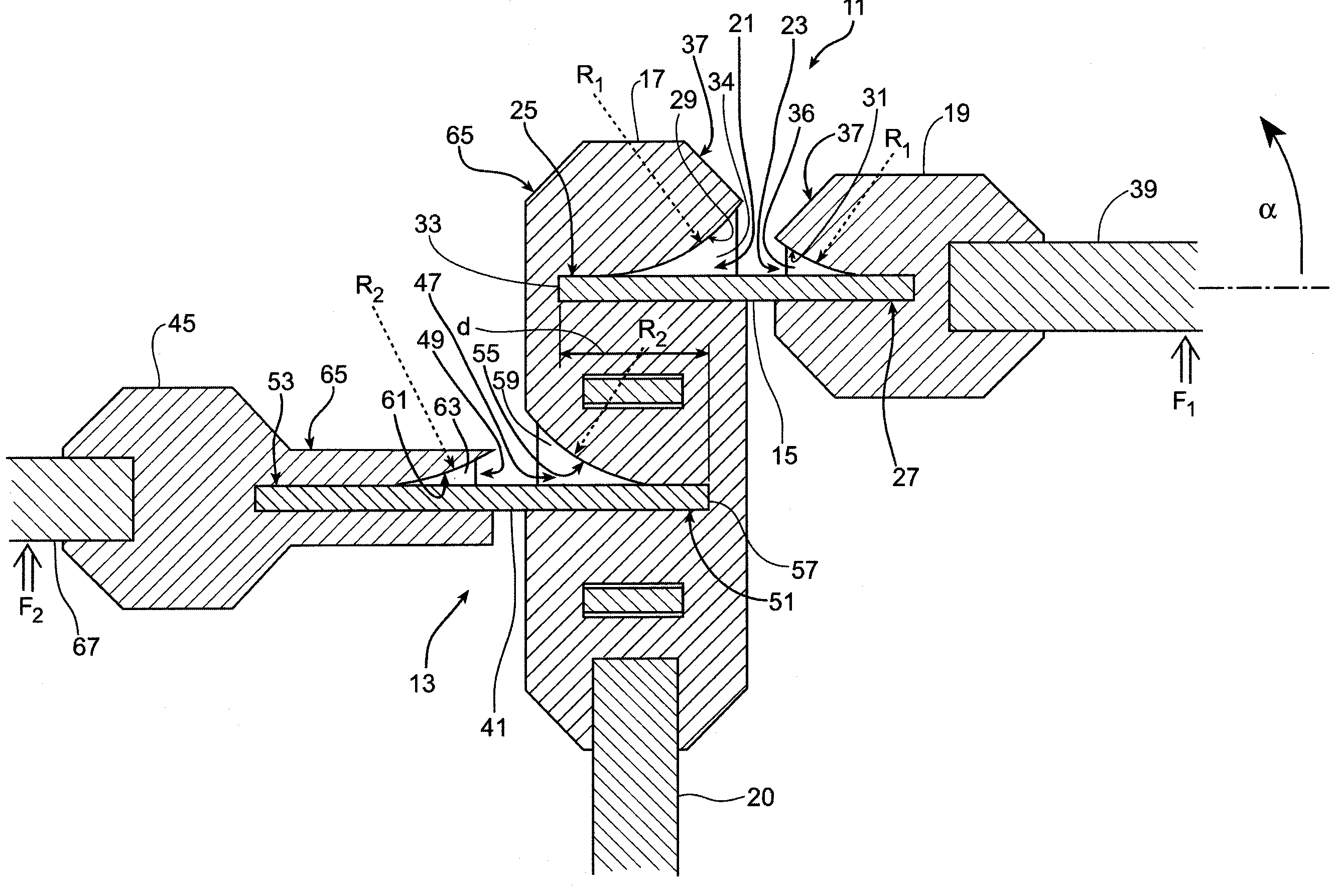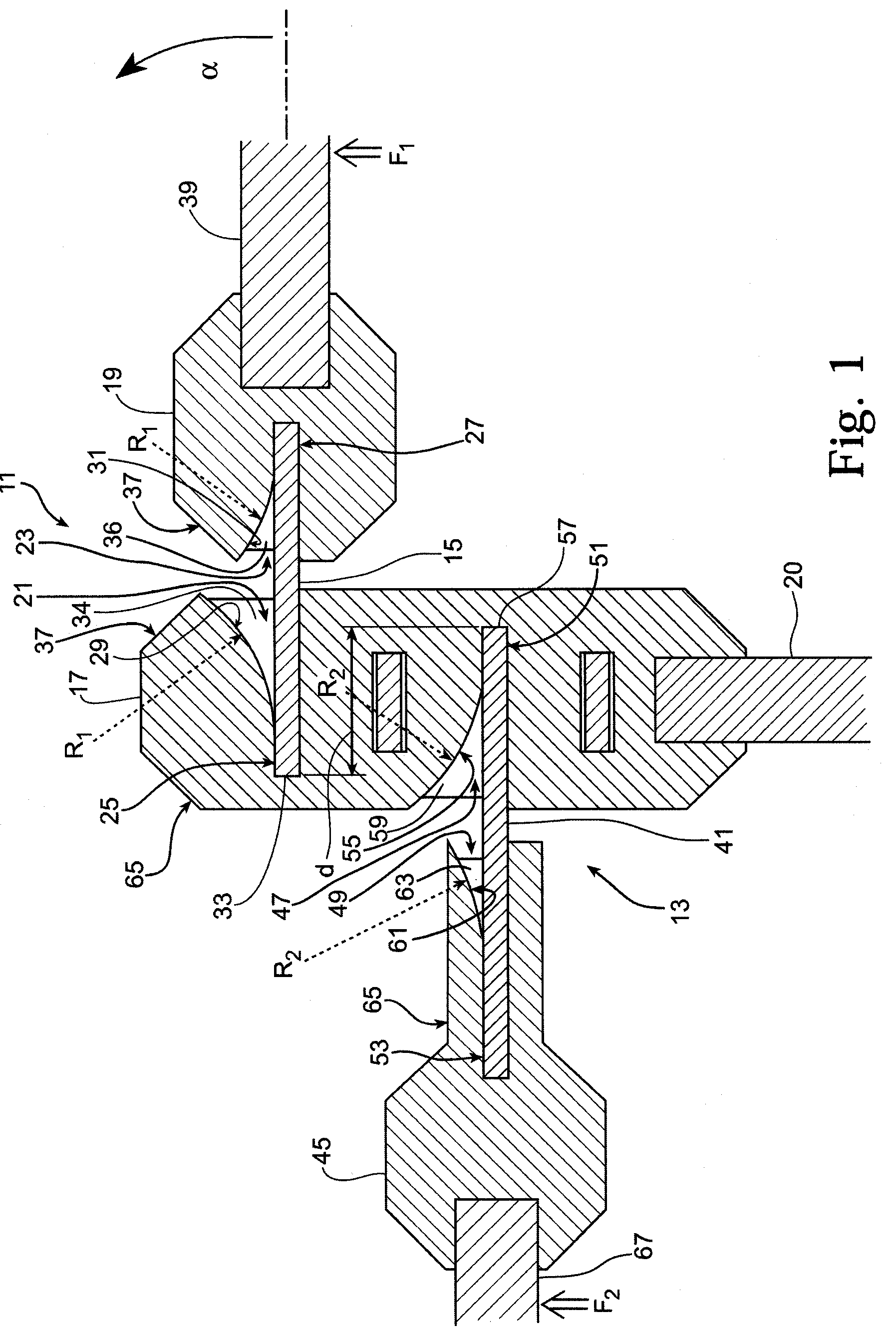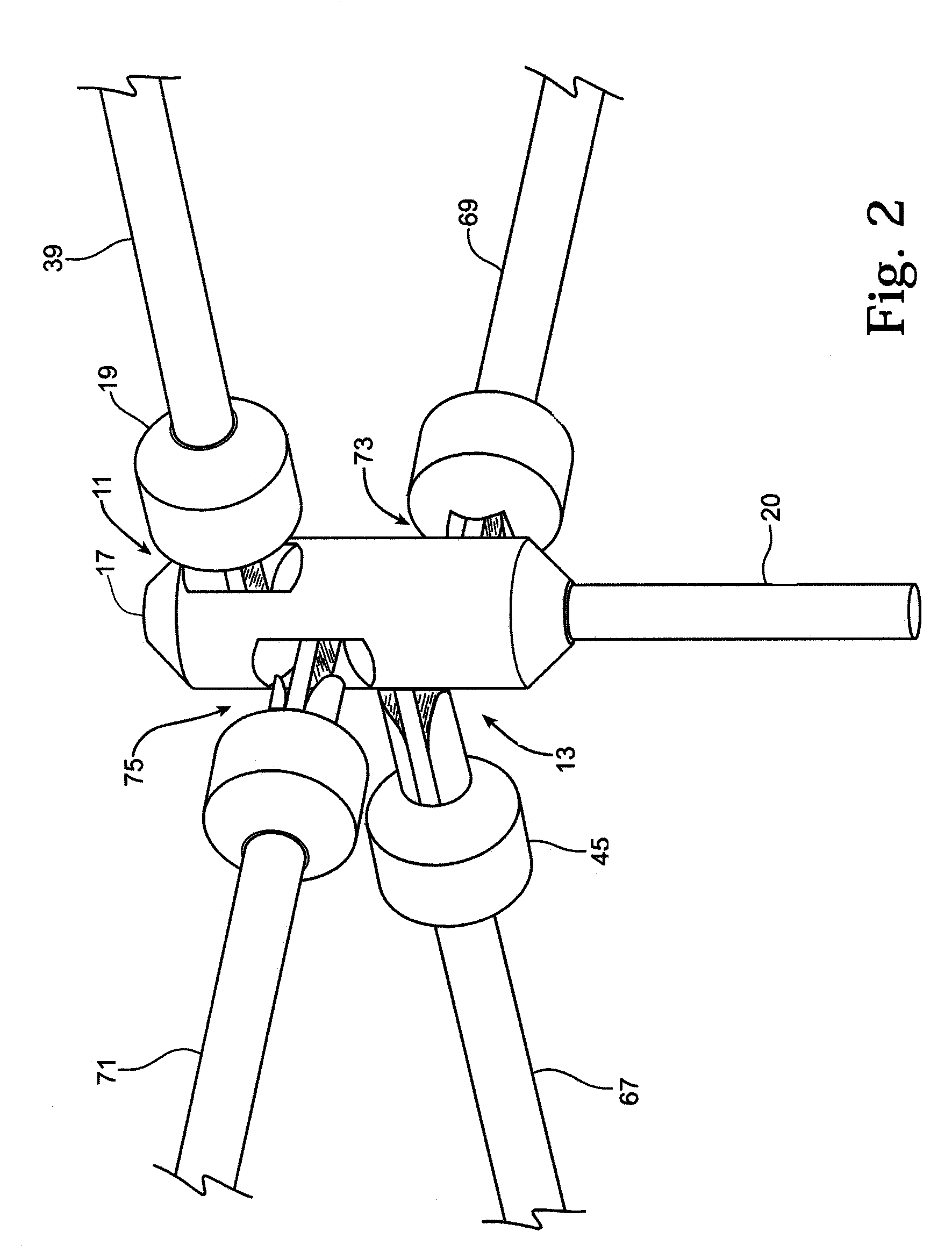Resilient joint for deployable structures
a monolithic joint and deployable technology, applied in the direction of wing accessories, couplings, rod connections, etc., can solve the problems of cumulative clearance between each pair of joint parts, significant problems such as dead bands, dead bands, etc., to limit the flexure's bend radius, less structural efficiency, and constrain the amount of rotation
- Summary
- Abstract
- Description
- Claims
- Application Information
AI Technical Summary
Benefits of technology
Problems solved by technology
Method used
Image
Examples
Embodiment Construction
[0017]Turning to the drawings, FIG. 1 illustrates flexure joints 11 and 13 of the present invention. Joint 11 is comprised of flexure 15, structural node 17, and structural connector 19. Node 17 is attached atop nonarticulating rigid member 20. Node 17 includes cavity 21 and connector 19 includes cavity 23. Flexure 15 is attached at its two ends, respectively, to base region 25 of cavity 21 and base region 27 of cavity 23. Cavity 21 includes curved surface 29 having radius of curvature R1. Cavity 23 includes curved surface 31 also having radius of curvature R1. Cavity 21 also includes base 33 and planar, parallel lateral sides, with only side 34 being shown. Cavity 23 also includes planar, parallel lateral sides, with only side 36 being shown. Node 17 and connector 19 include mating surfaces 37. Member 39 is fixedly attached to connector 19.
[0018]Joint 13 is comprised of flexure 41, node 17, and connector 45. Node 17 also includes cavity 47, and connector 45 includes cavity 49. Flex...
PUM
 Login to View More
Login to View More Abstract
Description
Claims
Application Information
 Login to View More
Login to View More - R&D
- Intellectual Property
- Life Sciences
- Materials
- Tech Scout
- Unparalleled Data Quality
- Higher Quality Content
- 60% Fewer Hallucinations
Browse by: Latest US Patents, China's latest patents, Technical Efficacy Thesaurus, Application Domain, Technology Topic, Popular Technical Reports.
© 2025 PatSnap. All rights reserved.Legal|Privacy policy|Modern Slavery Act Transparency Statement|Sitemap|About US| Contact US: help@patsnap.com



